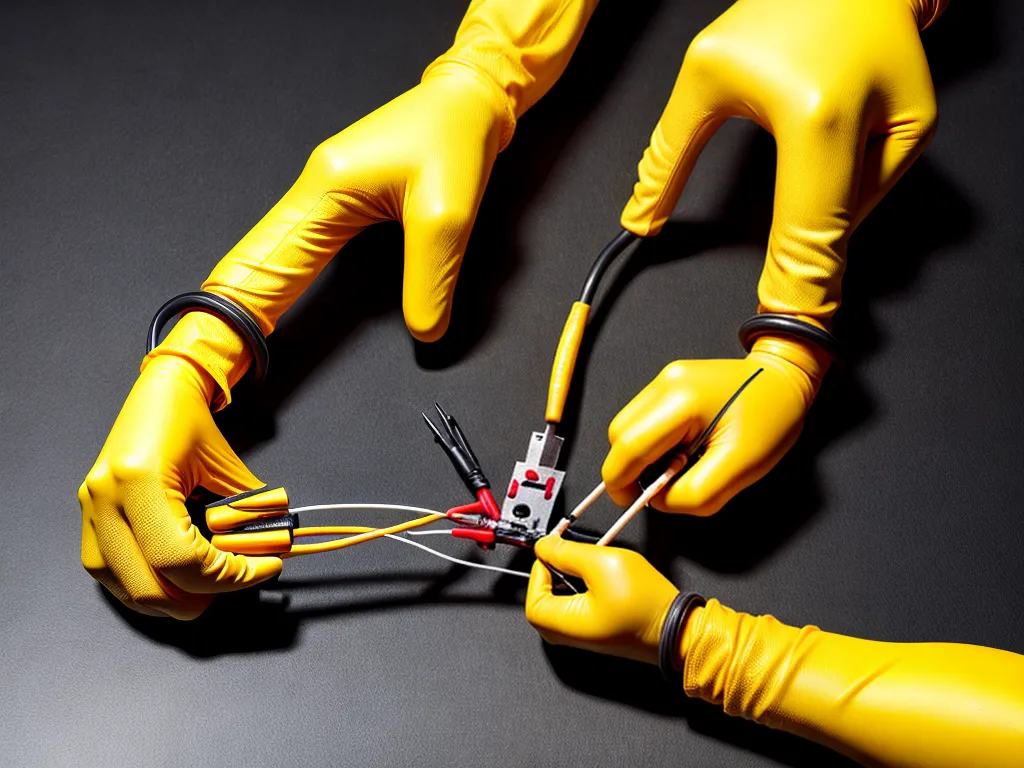
Splicing wires together is an essential skill for completing electrical projects around the home. However, without the proper tools or training, splicing wires can be dangerous if not done carefully. In this comprehensive guide, I will cover how to safely splice wires together using materials commonly found around the house.
Understanding Electrical Safety
Before splicing any wires, it's crucial to understand some electrical safety basics. Electricity can cause serious injury or death if mishandled. Here are some key tips:
- Assume wires are live. Even if the power is off, always handle wires as if they are live.
- Avoid working on live circuits. Turn off power at the breaker before splicing.
- Use insulated tools. Never use metal tools, which can cause shorts. Opt for plastic or wood.
- Wear protective gear. Use rubber gloves and eye protection when splicing.
- Separate wires by color. Keep the hot, neutral, and ground wires separated.
- Connect matching colors. Hot to hot, neutral to neutral, ground to ground.
Following these safety guidelines will help prevent electrical hazards while splicing wires.
Gathering the Right Materials
Splicing wires without tools requires clever use of common household items. Here are some suggested materials to gather:
- Electrical or masking tape - For insulating splices
- Tweezers - For handling small wires
- Scissors - For cutting and stripping wire insulation
- Popsicle sticks - For twisting wires together
- Safety pins - For scraping wire insulation
- Plastic container - For organizing materials
Avoid using metal objects like knives or forks which could short the wires. Plastic and wood are safer options.
Stripping the Wire Insulation
Before splicing, the insulation must be stripped off the ends of the wires to expose the copper metal underneath.
To strip wire insulation:
- Use scissors to carefully cut into the insulation near the end of the wire. Take care not to nick the copper.
- Alternatively, a safety pin can be used. Scrape off just the insulation while leaving the copper wire intact.
- Peel, twist, or pull the cut insulation off the end of the wire.
- Expose approximately 1/2 inch of copper at the end of each wire.
Repeat the process to strip both wires being spliced.
Twisting the Bare Wire Ends Together
With the copper wire exposed on both ends, the bare metal can be twisted together to join the wires.
To twist the wires:
- Line up the stripped ends so the exposed copper overlaps
- Use tweezers or fingers to tightly hold the ends
- With the other hand, take a popsicle stick and twist one wire around the other clockwise 8-10 full rotations
- Ensure the wires are twisted together as tightly as possible to maximize the electrical connection
The bare wires are now joined ready to be insulated.
Insulating the Spliced Wires
The final step is to insulate the twisted splice to prevent shorts, shocks, and sparks.
To insulate the splice:
- Wrap electrical tape around the twisted section, ensuring no copper is exposed
- Stretch the tape tight and overlap by at least 1/2 inch as you move up the wires
- Cover at least 1/2 inch past the end of the twisted section
- Press firmly along the tape to seal the adhesive and prevent unraveling
Masking tape can work in a pinch but provides less insulation than electrical tape.
Safety Check and Power Restoration
Before turning power back on:
- Give the completed splice a firm pull test to ensure the wires hold together
- Check for any exposed copper and re-tape if necessary
- Use a non-contact voltage tester to confirm the wires are dead
- Turn the power back on at the breaker and check lights/devices
With care and proper respect for electricity, wires can be spliced safely without tools or training. Always prioritize safety, double check work, and ask an electrician if unsure. Handled improperly, splicing wires can be deadly. But armed with the right knowledge, anyone can install simple wire splices around the house.